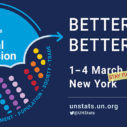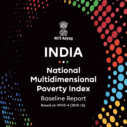
Search
News


Malawi Multidimensional Poverty Index Report
The Malawi Multidimensional Poverty Index Report presents the results of the first national Multidimensional Poverty Index for Malawi. The Malawi MPI has been developed to monitor the key simultaneous disadvantages that affect people living in multidimensional poverty in Malawi, and to identify social progress made towards the Malawi 2063 national vision and target 1.2 of the SDGs.

India launches national MPI baseline report
India has launched the first baseline of a rigorous Multidimensional Poverty Index to monitor poverty at the country, state and district level. The India National MPI builds on the 10 indicators of the global MPI to add metrics on maternal health and bank account under the dimensions of health and standard of living, respectively.


‘We no longer have to make policy blindly’, leaders reflect on poverty reduction at UNGA 76
The Multidimensional Poverty Peer Network (MPPN) and the United Nations Economic and Social Commission for Western Asia (ESCWA) co-hosted an online side event at the 76th UN General Assembly yesterday for 19 world leaders and policymakers. In the event, organised by the Oxford Poverty & Human Development Initiative (OPHI) at the University of Oxford, speakers discussed how to envision a more equitable future using Multidimensional Poverty Indices (MPIs) as policy tools. As Samheng Boros, the Secretary of State for Cambodia put it, ‘we no longer have to make policy blindly’.











